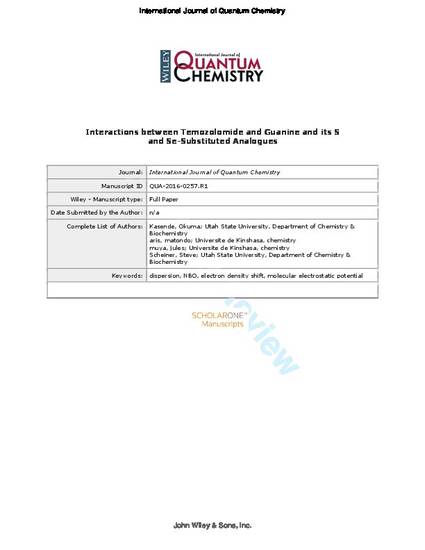
Temozolomide was paired with guanine, 6-selenoguanine, and 6-thioguanine, as well as the SH tautomer of the latter. The potential energy surface of each heterodimer was searched for all minima, using Dispersion-Corrected Density Functional Theory and MP2 methods. Among the dozens of minima, three categories were observed. Stacked geometries place the aromatic systems of the two molecules parallel to one another, while the two systems are roughly perpendicular to one another in a second category. Also found are coplanar structures held together by H-bonds. Dispersion proves to be a dominating attractive force for the stacked structures, less so for perpendicular, and smallest for the coplanar dimers. Geometries and energetics are relatively insensitive to S and Se substitution, but tautomerization reverses relative stabilities of different geometries.

This is the peer reviewed version of the following article: Kasende, O. E., Matondo, A., Muya, J. T., Scheiner, S. I. (2017). Interactions between temozolomide and guanine and its S and Se-substituted analogues. International Journal of Quantum Chemistry, 117(3), 157–169. http://dx.doi.org/10.1002/qua.25294, which has been published in final form at https://doi.org/10.1002/qua.25294. This article may be used for non-commercial purposes in accordance with Wiley Terms and Conditions for Use of Self-Archived Versions.